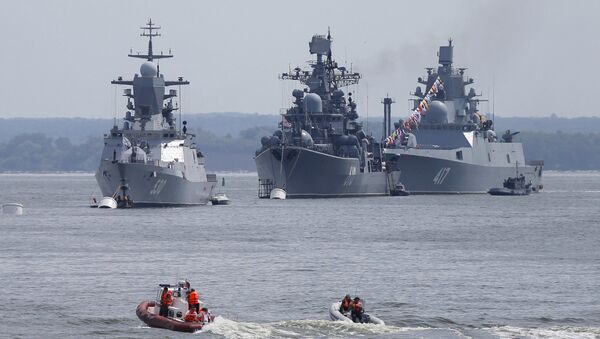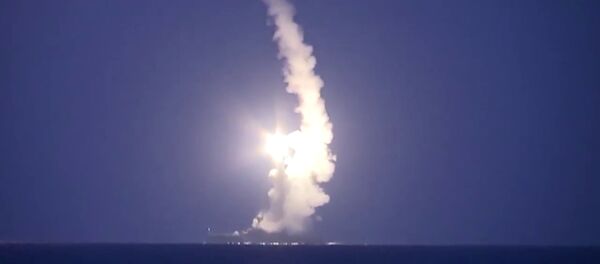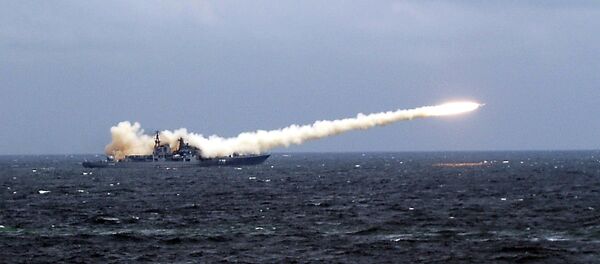Earlier this month, 26 cruise missiles were launched from Russian warships in the Caspian Sea. Traveling roughly 932 miles across the land, the projectiles struck 11 terrorist targets in Syria.
Those missiles were Kalibr-NKs, also known as "The Sword of the Caspian," and they impressed even Western skeptics.
"It should be a wakeup call that we don’t have a monopoly on the capability," Eric Wertheim, a US naval analyst, told the Daily Beast. He added that Moscow has joined "an exclusive club of global military powers. And that should worry the Pentagon."
With the success, the Kremlin now plans to incorporate the Kalibr-NKs into its Project 22160 corvettes.
"The successful salvoes…demonstrated the firepower of those missiles," said Alexander Karpov, First Deputy Director General of Gorky Zelenodolsk Shipyard, according to IHS Janes. "Besides, they take up little volume."
"The striking range depends on the target, whether it is ground-based or naval, on the route of the missile and the ground obstacles it needs to go around," Rear Admiral Viktor Kochemazov told journalists on Saturday, "and, in total, amounts to 2,000 km."
Prototypes of the corvette have already been on display at the Interpolitex-2015 exhibition in Moscow. These models show that the missile systems will consist of two separate containers, each outfitted with four missiles.
With two of the 1,500-1,800 ton vessels already under construction, six are planned for the Russian Navy’s Black Sea Fleet. The first, Vasily Bykov, is slated for launch in 2017, while Dmitry Rogachev is due out the following year.




